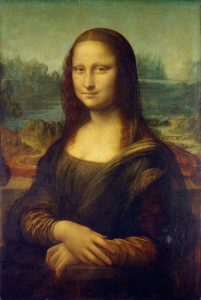Back in the day—when you were in elementary school—you learned about past tense, present tense, and future tense. You’ve gotten along all this time knowing these three basic tenses.
But now your prof has thrown out the term “literary present tense,” and it has put you into a slight tailspin.
Don’t worry—it’s not a completely new type of tense. Literary present tense means that you need to write in present tense when writing about literature and the arts.
Need a more concise and complete explanation? Here’s what you need to know.
What Is Literary Present Tense?
For most purposes, “literary present tense” is the same as present tense. It’s called literary present tense to remind you that, when discussing literature and other arts, such as artwork or films, you need to write in present tense.
Keep in mind that when I say “discussing literature,” this applies both to the discussions about literature you might have in class and to writing a literary analysis essay.
Why Present Tense?
When writing about literature and the arts, you need to assume that you’re discussing the artistic work in the perpetual present, meaning that it’s always there, always present.
Think of it this way. The Shining is the same book today as it was when it was written, and it will exist in the same form years from now. Thus, you’ll write about the arts in present tense.
This is different than writing about other subjects, such as history or science. Historical events occurred in the past, so they’re written about in past tense.
If you’re writing about your science experiment, you completed the experiment in the past. That means you’ll write about it in past tense too. The same is true for studies or experiments you learn about in your research.
Scientists conducted the experiments in the past, so you’ll write about the experiments in past tense. (NOTE: If you’re writing in a science class, you’ll most likely cite in APA and always write in the past tense when discussing the steps and results of your experiment.)
Can You Give Me a Few Examples?
Of course I have a few examples up my sleeve to help clarify literary present tense! Check out the below examples of how to use the correct tense in your writing.
Use literary present tense when writing about literature or other arts
Whether you’re writing about the work as a whole or writing about specific characters and their actions, use literary present tense.
Here are four examples:
- The ghost in Hamlet reveals Hamlet’s unspoken thoughts.
- Willy Wonka showcases many memorable characters.
- Picaso’s paintings often contain storytelling elements and a mixture of themes.
- Juliet commits suicide when she sees that Romeo is dead.
Use past tense when referring to the author/artist and his/her work
Both of the examples below require past tense because they discuss a historical action of the author or artist, not the work itself.
- Stephen King published The Shining in 1977.
- The Mona Lisa was painted by Leonardo Da Vinci.
When it’s appropriate to use both past and present tense
Your teachers have always told you to stay consistent and avoid switching between past and present tense in a sentence.
When writing about literature and the arts, however, sometimes it’s necessary to switch tenses. You’re mixing historical facts with literary fiction.
Here are two examples:
- Though written many years ago, many of Shakespeare’s plays focus on human tragedies that are still common today.
- Edvard Munch painted The Scream in 1893, but the painting still resonates with art lovers.
Here, the sentences begin by mentioning the author/artist, so past tense is needed. The second part of the sentence mentions the artist’s work (a play or painting), so literary present tense is needed.
Use literary present tense when incorporating literary quotes
When you quote literary works, your signal phrases to introduce the quote (such as “he replies”) should be written in present tense. That means if you’re writing a literary analysis, your analysis of the quotes should be written in present tense too.
Here are two examples:
- Feeling guilty about the murders, Lady Macbeth utters the phrase, “Out, damn’d spot! out, I say!”
- In The Wizard of Oz, Dorothy asks the Scarecrow, “How do you talk if you don’t have a brain?” He replies, “Well, some people without brains do an awful lot of talking don’t they?”
Remember, if you’re quoting someone, you’re using their exact words. That means you need to include proper citations. (In humanities courses, you’ll most likely use MLA 8 citations.)
Don’t Feel Too Tense!
I know it can be a little confusing (and stressful) to keep all these tenses straight. But don’t get too stressed. There’s always a friendly Kibin editor available to help you maintain your sanity.
Not ready to let an editor look at your essay just yet, and need of a bit more help with your literary analysis paper first? Take a look at these articles:
- How to Write a Literary Analysis That Works
- Literary Analysis Tips From a Kibin Editor
- How to Write a Character Analysis That Works
Analyzing a movie? Literary present tense also applies. Read How to Analyze a Movie for Dramatic Effect.
Looking for a few more examples of literary present tense? Check out these examples of literary analysis essays.
Happy writing!


